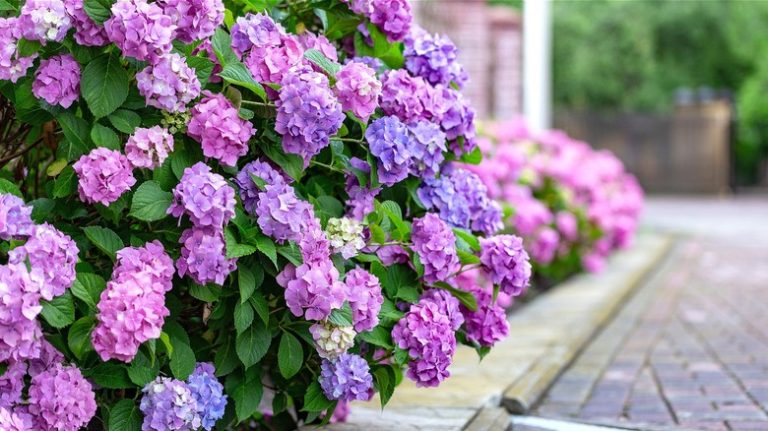If you’re looking to spruce up your garden with a plant that not only adds beauty but also has medicinal properties, then bloodroot (Sanguinaria canadensis) is an excellent choice. This article will provide you with all the information you need to know about bloodroot plant care and how to grow this stunning plant in your garden.
Bloodroot is a perennial plant that grows wild in the woods of North America, particularly in Canada. It gets its name from the red sap that oozes from its roots, which has been used for various medicinal purposes for centuries. The sap contains a compound called sanguinarine, which has been found to have anti-cancer properties.
If you’re interested in growing bloodroot in your garden, there are a few rules you need to follow. Bloodroot prefers to be grown in moist, well-drained soils that are slightly acidic. It thrives in shaded areas, particularly underneath trees or in woodland gardens. The plant goes dormant during winter, so it’s important to provide some protection, such as mulching, to help it withstand the cold.
When it comes to planting bloodroot, you have two options: you can either buy plants from a reputable nursery or grow them from seeds. If you decide to go with seeds, make sure to stratify them before planting. This means you need to store the seeds in a cool, dry place for a period of time to mimic the winter conditions they need to germinate.
Bloodroot plants have small white flowers that bloom in early spring, while their leaves unfurl in the summer to form an attractive copper-colored foliage. The leaves are divided into five to nine lobed leaflets and have a terete shape. The plant also produces seedpods that ripen in the summer and then open up to release their seeds.
It’s worth noting that all parts of the bloodroot plant are toxic if ingested, so it’s important to keep this plant out of the reach of children and pets. While bloodroot is mainly grown for ornamental purposes, its medicinal properties make it a valuable addition to any garden.
Now that you’ve learned the basics of bloodroot plant care, you can start incorporating this beautiful and beneficial plant into your garden. Whether you’re looking for a showy addition to your flower beds or a natural remedy for certain ailments, bloodroot is sure to be a welcome addition. So, get ready to add some color to your garden and enjoy the many benefits of bloodroot!
Bloodroot Sanguinaria canadensis L Horticulture Information Leaflets
Bloodroot (Sanguinaria canadensis L.) is a sometimes showy flowering plant that opens its flowers in early spring. The plants are found in woods and other shady, moist places where the soil is rich and moisture is abundant. Bloodroots are known for the deep red sap that flows from the broken stem or rhizome.
This plant is an ornamental variety that can be cultivated in gardens or naturalized in wooded areas. It is also a native plant in the United States, making it a good choice for national effort plantings or restoration projects.
Bloodroot Cultivation Information
Bloodroots are relatively easy plants to care for, but there are some rules to follow when growing them. They prefer acidic soils and should be planted in a shaded area. Young bloodroot plants can tolerate some sun, but they will require extra moisture to thrive.
The best time to plant bloodroots is in the fall, before the ground freezes. They should be planted one inch deep and six inches apart. The plants will form colonies over time, so it is important to give them enough space to spread.
Bloodroot Flower Information
Bloodroot flowers are white with yellow stamens. They open fully on sunny days and close at night or during cloudy weather. Flowering occurs between March and May, depending on the region. The flowers have a unique shape and are often used in marketing materials for gardening and landscaping.
It is important to note that bloodroot plants are toxic and should not be consumed. The plant’s sap contains an agent that has been studied for its potential cancer-fighting properties. However, further research is needed before it can be used as a medical treatment.
Bloodroot Harvesting and Uses
Bloodroot plants can be harvested for their rhizomes, which contain the sap. The rhizomes can be cut into small pieces and used to create a dye or made into a paste for topical use. The sap can also be used as an insect repellent.
In conclusion, bloodroot (Sanguinaria canadensis L.) is a beautiful and unique plant that can be grown in gardens or naturalized in wooded areas. It requires specific care and cultivation practices, but the effort is rewarded with its ornamental flowers and potential medicinal uses.
For further information on bloodroot plant care, you can find additional horticulture information leaflets online.
Cultivation Practices
When it comes to cultivating bloodroot plants, there are a few important practices to follow. Bloodroots, or Sanguinaria canadensis, are wildflowers native to North America and are known for their beautiful white flowers and medicinal uses. If you’re interested in growing bloodroots in your garden, here are some tips:
1. Select the right location: Bloodroots prefer moist, well-drained soil that is slightly acidic. They can tolerate full sun to partial shade, but they do best in areas with filtered sunlight or dappled shade.
2. Plant bloodroot rhizomes: Bloodroots grow from rhizomes, which are underground stems that store food and nutrients. Plant the rhizomes about one to three inches deep in the soil, with the pointed side facing up. Space them about six to twelve inches apart.
3. Provide proper care: Bloodroots need regular watering, especially during the first year of growth. After that, they are fairly drought-tolerant. Fertilization is generally not necessary, but you can add a layer of compost around the plants in the spring for added nutrients.
4. Control weeds and pests: Keep the area around bloodroot plantings clean and free from weeds. Mulching can help with weed control and also help retain moisture in the soil. Deer and rabbits may also be attracted to bloodroot plants, so take measures to protect them if necessary.
5. Enjoy the blooms and foliage: Bloodroot plants typically flower in early to mid-spring, with each flower lasting for about a week. The flowers have eight petals and numerous yellow stamens in the center. The leaves, which are shaped like a hand, emerge after the flowers and provide a beautiful backdrop to the garden.
6. Learn about the uses: Bloodroots have a long history of medicinal uses, particularly as an anti-cancer agent. The plant contains alkaloids that have been shown to have anti-inflammatory and anti-tumor properties. However, further research is needed to fully understand their potential benefits.
In conclusion, the cultivation practices for bloodroot plants are fairly straightforward. By selecting the right location, planting the rhizomes properly, providing care, controlling weeds and pests, and enjoying the blooms and foliage, you can successfully grow bloodroots in your garden. Just remember to follow the necessary steps and enjoy the beauty and potential benefits of this unique plant.
Marketing and Economics
When it comes to marketing and economics, there are several important considerations in the cultivation of bloodroot (Sanguinaria canadensis). Bloodroot is a botanical plant that belongs to the poppy family (Papaveraceae) and is known for its unique flowering and medicinal properties, such as sanguinarine, which has been used as an anticancer agent.
Before diving into the marketing practices, it is essential to learn how to grow bloodroot. This perennial plant grows from rhizomes and requires a shaded site with rich, moist soils. Bloodroot prefers woodland or garden settings, making it a popular choice for naturalized plantings. It can tolerate a range of soil types, but it thrives best in well-draining and slightly acidic soils.
When it comes to marketing practices, it’s important to understand where bloodroot will thrive best. By learning more about the plant’s cultivation requirements, gardeners and horticulture enthusiasts can make informed decisions about whether to grow bloodroot.
Growing Bloodroot: Facts and Cultivation
Bloodroot plants prefer shaded areas and are often found growing under trees or in wooded areas. The plants have deeply lobed leaflets and produce distinct white flowers with yellow stamens. The flowering period usually occurs in early spring and lasts for a few weeks.
For those looking to grow bloodroot, it’s important to select a suitable site where the plant will receive partial shade. Bloodroot can thrive in both sun and shade, but it prefers more shaded conditions. The soil should be well-draining and rich in organic matter.
One of the key aspects of bloodroot cultivation is the proper planting of rhizomes. Rhizomes should be planted in the fall or early winter, and they should be spaced about 4 to 6 inches apart. The planting hole should be wide enough to accommodate the rhizome and deep enough for the top to be level with the soil surface. After planting, it’s essential to water the area thoroughly to ensure proper establishment.
Marketing and Economic Considerations
Once bloodroot plants have been successfully established, gardeners and horticulture enthusiasts can explore various marketing opportunities. The demand for bloodroot is often driven by its medicinal properties and use in alternative therapies. The natural anticancer properties of sanguinarine, found in bloodroot, have made it a popular choice for those seeking natural remedies.
The market for bloodroot products can range from local sales to national distribution. Some gardeners may choose to sell bloodroot plants directly to consumers, while others may opt to cultivate and sell bloodroot extracts in various forms, such as juice or powdered supplements.
It’s important to note that bloodroot should be handled with caution, as all parts of the plant are toxic if ingested. Proper labelling and marketing practices should reflect the potential risks and advise consumers about the safe and appropriate use of bloodroot products.
In conclusion, marketing and economics play a significant role in the cultivation and distribution of bloodroot. By understanding the cultivation practices and market demands, growers can select the most suitable strategies for selling their bloodroot products while ensuring consumer safety and satisfaction.




